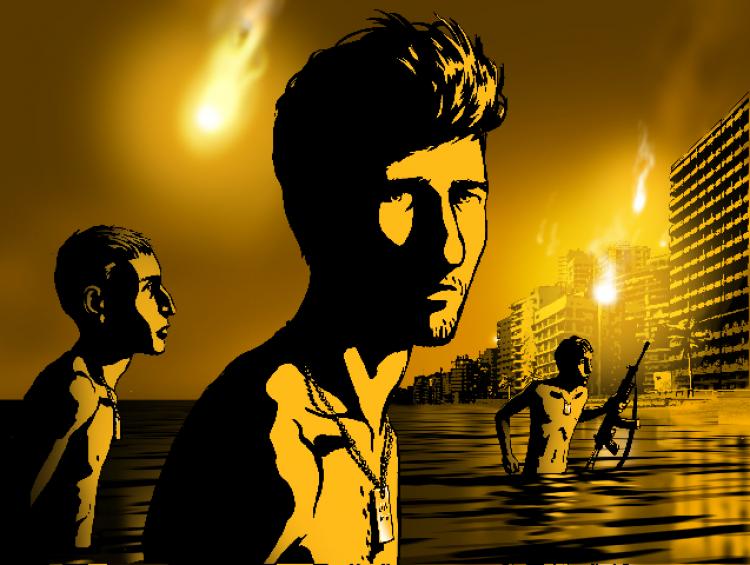Based on the true story of Ari Folman’s expedition into the imaginative landscape of his past, “Waltz with Bashir” is a surreal animated documentary that investigates the psychological relationship between memory, war, and trauma. Seasoned Israeli filmmaker Ari Folman sets out to recover the missing pieces of his involvement in the first Israeli/ Lebanon war in the 1980s.
Prompting this journey is a meeting in a bar with an old friend who confesses to having a recurring nightmare in which he is chased by 26 vicious dogs. It seems clear to both men that the dream is directly related to their Israeli army mission and, notably odd to both of them, that Folman has no recollection of that time.
Folman meets with comrades, and others who may be able to help him reconstruct the events that ultimately led him to forget. Among those he consults is his best friend and filmmaking colleague Ori Sivan, whom Folman regards as his personal therapist.
Other colorful characters are the legendary Ron Ben-Yeshai, considered the greatest Israeli war correspondent, iron man Shmuel Frenkel, and maverick Carmi Cna’an.
The series of interviews reveals startlingly honest accounts of the events as remembered and told by those involved in the military action known as the Sabra and Shatila massacres. With the benefit of their now matured perspective and 20 years of hindsight, we hear the men’s shocking stories that they experienced as teenagers.
The powerful and revealing animation, sometimes stark like a German woodcut print, lends itself brilliantly to address and capture the surreal nature of war and memory.
Folman, who wrote, directed, and produced “Waltz with Bashir,” uses the animation medium brilliantly. He depicts a level of violence that is never gruesome or gratuitous, existing equally with dreams, memories, and factual events. These various elements together occupy the same space and texture like a quilt. Ultimately, this film offers up guilt of the conscious over the involvement in the Israeli aggression, demonstrating a genuine desire for a lasting peace.
[etRating value=“ 4”]







Friends Read Free